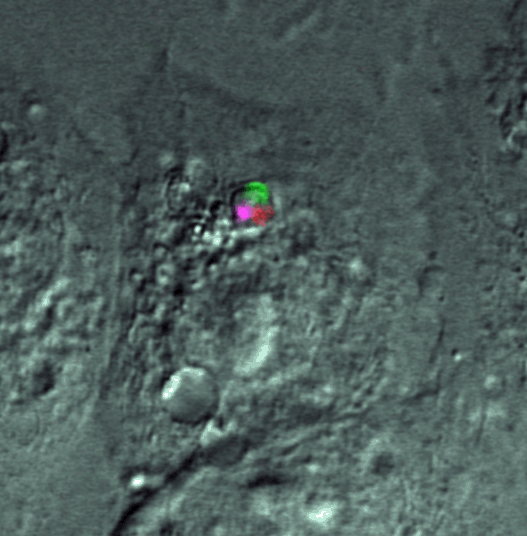
CIB researchers, Teresa Suárez y Enrique J. de la Rosa, and their group are engaged in a joint effort with the Microelectronics Center from Barcelona (CSIC), Barcelona University and the Bioengeeniering Institute from Catalonia to better understand cells using nanotechnology tools. Following this path they have managed to introduce inside cells, using lipofection, micrometric array chips able to monitor cell changes inside living cells. This goal opens the door to more precise and accurate studies in biomedicine. The work has been published in the journal Advanced Materials.
Chip fabrication combines techniques commonly used in microelectronics-chip production, which allows millions of micron sized chips, with molecular printing techniques, using biomolocules as the ink, to achieve higher molecular-pattern flexibility in small areas. The result of these powerful technologies are chips that allow the study of individual intact cells."This is a very important issue, because heterogeniety is inherent to cell populations and essential in many physiological and pathological processes", says Teresa Suárez, researcher at Centro de Investigaciones Biológicas (Madrid).
N. Torras, J. P. Agusil, P. Vázquez, M. Duch, A. M. Hernández-Pinto, J. Samitier, E. J. de la Rosa, J. Esteve, T. Suárez, L. Peìrez-García y J. A. Plaza. Suspended Planar-Array Chips for Molecular Multiplexing at the Microscale. Advanced Material. DOI: 10.1002/adma.201504164

